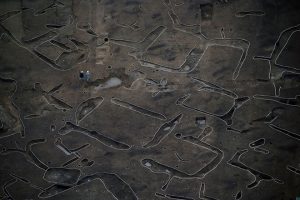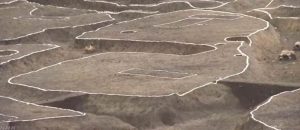Excavation at the Kori and Heka ruins in Ibaraki, Osaka Prefecture, Japan, unearthed about 140 tombs in type called “hokei shukobo“, consisting of rectangular burial mounds.

Excavations covered about 16500 square metres. Researchers believe that a large-scale village was located in the area of the sites. They are believed to date back to the mid- and late Yayoi period, between around 300 BC to 300 AD). They are also believed to have been a general grave for people in the Yayoi period and the first half of the Kofun Period (around 300-700 AD). Archaeologists state that the grave site is the biggest of its kind in Japan.


The largest of the burial mounds, surrounded by trenches, measures about 18 meters in length and 12 meters in width, covering about 220 square meters. Archaeologists discovered 22 pit structure buildings, “kuda dama” cylindrical beads, which appear to be made of jasper, and a carefully crafted clay doll in near perfect condition. The rare doll was unearthed at the Kori ruins. It has clear-cut eyes and nose, is 5.9 centimetres tall and 3 cm wide.

(after The Times of Japan, Takashi Yoshikawa, Gen Hashimoto & Asahi Shimbun)